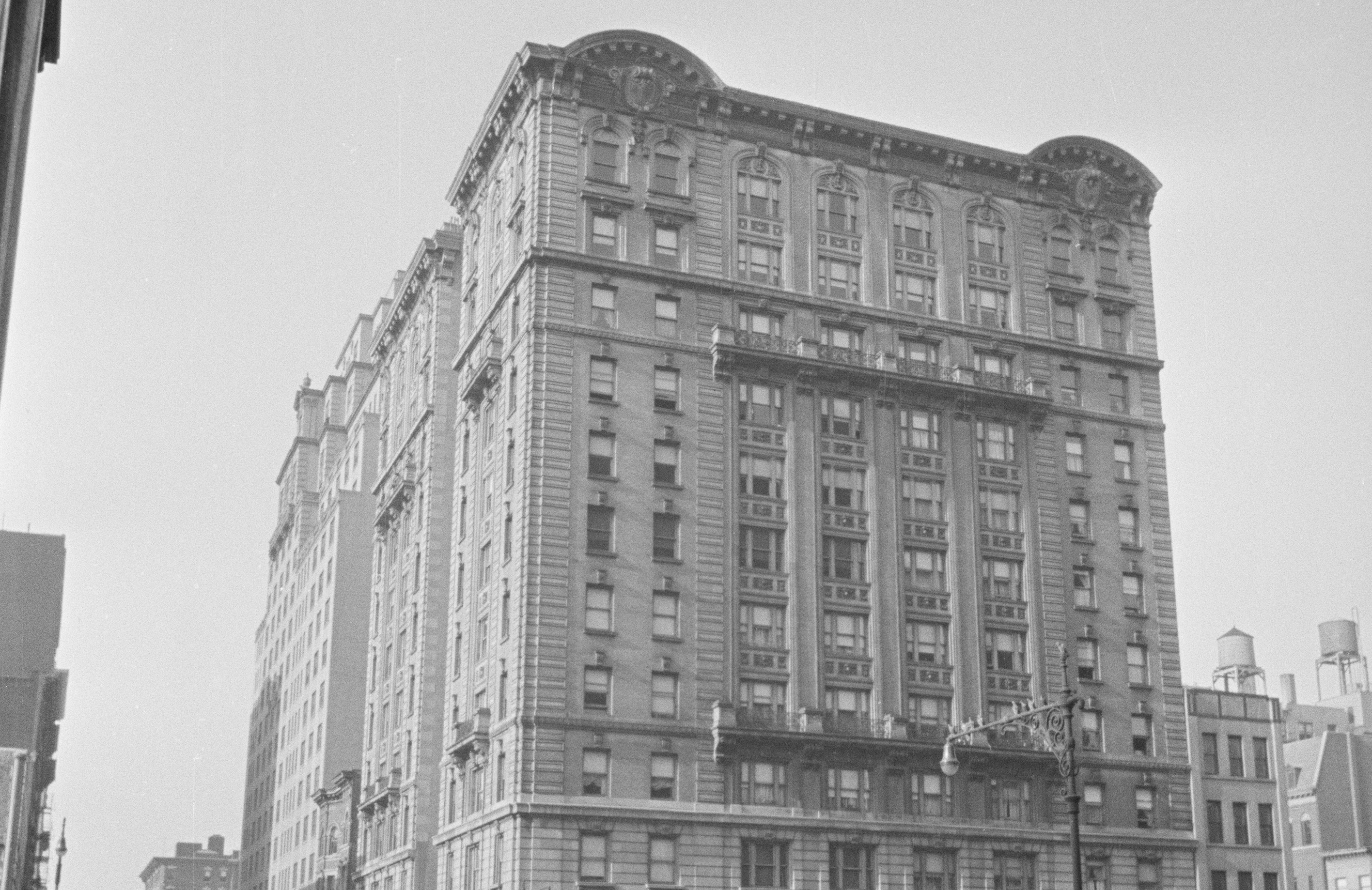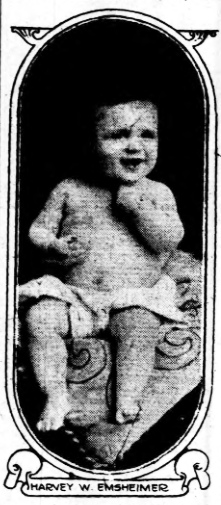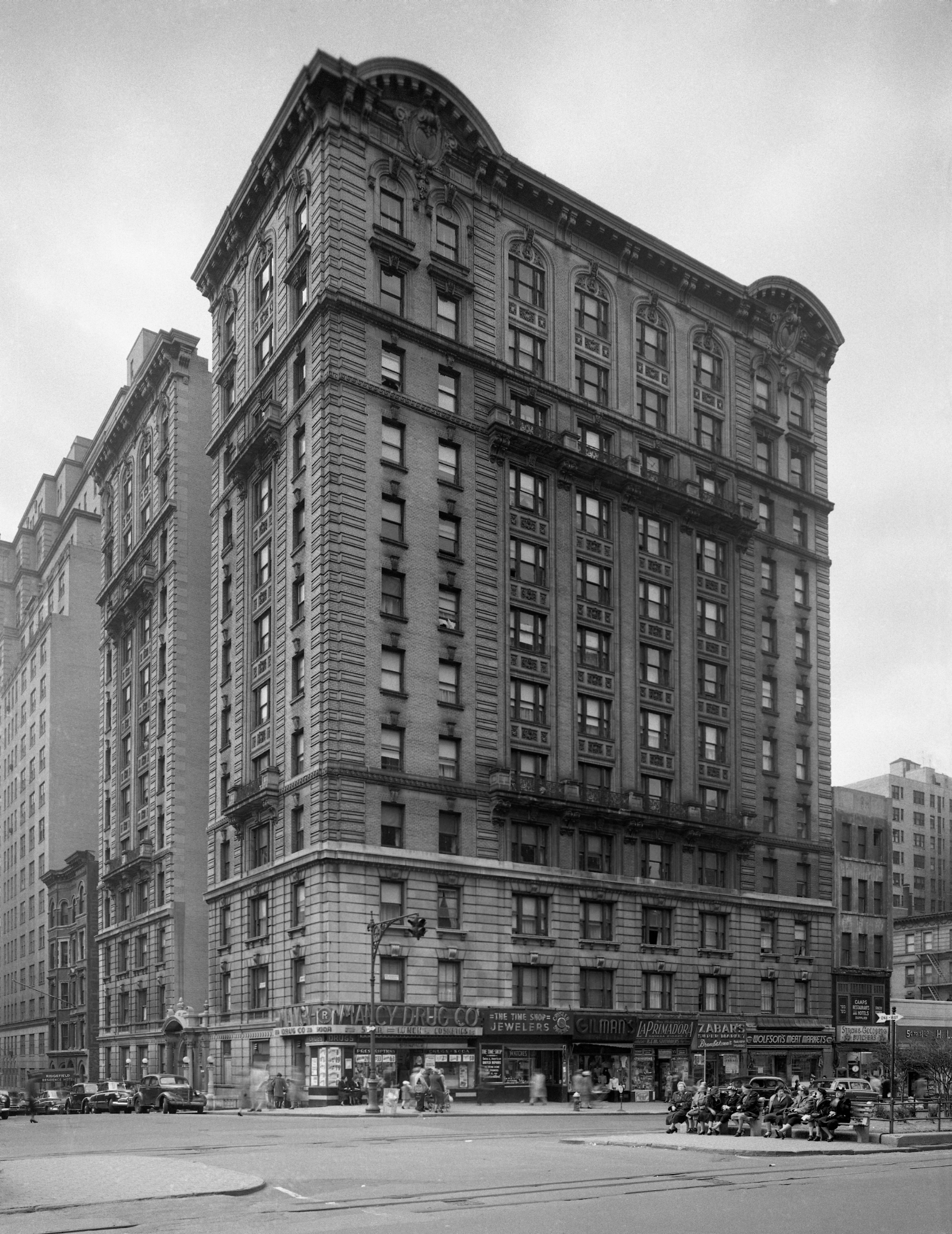
The Roxborough
by Tom Miller
On April 2, 1910, the Real Estate Record & Guide reported that architects Neville & Bagge had completed plans “for the improvement of the northwest corner of Broadway and 92d st., with a 12-story elevator apartment house,” for The Yorkshire Realty & Construction Co. The $600,000 structure (around $17.7 million in 2022) would be named The Roxborough.
Completed in 1911, the building straddled the Regency and Beaux Arts styles. The French-style balconies on ornate brackets, for instance, were pure Beaux Arts. But the elegant entrance on West 92nd Street, with its fluted columns, lion masks, stone urn, and, above all, the classical busts within rondels, evoked early 19th-century British country houses. An ambitious cornice with large arches at the Broadway corners completed the design.
The sprawling apartments of six to eight rooms filled with well-to-do tenants. Among the first were Charles Conrad Ruthrauff and his wife, the former Florence May Barlow. Both were born in Ohio. The couple had two children, Wilbur Barlow and Harriet May. Harriet had married in 1908, but Wilbur, who graduated from Yale University in 1909, moved into the Roxborough with his parents.
Ruthrauff had brought his family to New York City in 1891 when he became manager of the Rogers Typograph Company. He later turned to mining, amassed a significant fortune and, after his retirement, devoted his time to collecting Old Masters and other valuable paintings. On the walls of their apartment, for instance, hung the Gilbert Stuart portrait of George Washington painted about 1800.
When the Ruthrauffs moved into the Roxborough in 1911, Wilbur was already engaged to Abbie Hageman Bourne. Their wedding was planned for October 25, 1912. The month prior to the event, Florence and Charles traveled West. On October 12, the New York Herald reported, “News of the death from heart disease of Mr. Charles Conrad Ruthrauff, fifty-eight years old, was received yesterday from Hailey, Idaho, at his home, No. 251 West Ninety-second street.” Somewhat surprisingly, the wedding went on as scheduled less than two weeks later.
He commanded his regiment at Gettysburg, was wounded at Trevillian Station, Virginia on June 11, 1864, and lost his right arm in the battle of the Opequan that year.
Florence remained in their Roxborough apartment. She was an art critic and writer of short stories and articles. Following Charles’s death, she became the art critic for the Morning Telegraph. The 1914 Woman’s Who’s Who of America listed her many accomplishments, as well as her “recreations,” which included outdoor sports and horseback riding, and noted she “favors woman suffrage.”
Another of the initial residents was Civil War General Theophilus Francis Rodenbaugh. Born in Easton, Pennsylvania in 1838, he had graduated from Lafayette College. The Oswego Daily Palladium said of him, “At the beginning of the civil war, when he was engaged in mercantile business, President Lincoln made him second lieutenant in the Second United States dragoons, the old Second cavalry. He gained rapid promotion through bravery.”
He had indeed earned his successive ranks. He was not only wounded at Beverly Ford, Virginia in June 1863, but had two horses shot under him. He commanded his regiment at Gettysburg, was wounded at Trevillian Station, Virginia on June 11, 1864, and lost his right arm in the battle of the Opequan that year.
Irwin Emsheimer, his wife, and their two-year old son Harvey lived in the Roxborough in 1915. On the afternoon of November 7, the three “were out for an airing,” as worded by the New York Herald. Little Harvey was in his baby carriage. As the family crossed West End Avenue and 95th Street, Irwin looked up to see the automobile of Charles R. Hayes speeding down the avenue. There was no time to escape. “Mrs. Emsheimer was thrown against a fence and severely bruised,” said the article. “Mr. Emsheimer was knocked down and his hip injured.”
The automobile had smashed directly into the baby carriage. The sub-headline in the New York Herald read, “Automobile Grinds Perambulator Into Debris.” The driver and six other men, including two policemen, lifted the vehicle enough that the carriage could be pulled out. ‘It was believed the baby would be found crushed to death. The mother was in hysterics with this fear.” But little Harvey was fine, other than crying over the major disruption. He was slightly bruised and his clothing was torn, but he was miraculously unhurt.
Following World War I, residents included Herman H. Stein, the treasurer of the Standard Oil Company, and his wife. Simultaneously, James P. Neimann, a former judge of Nassau County and his wife, Grace, occupied an apartment. No stay-at-home housewife, Grace was the first vice-president of the Women’s Democratic Club of Greater New York, and of the Athene Club. When America entered the war, she became chairman of the war relief unit of the Athene Club. She also served on the Mayor’s Committee on National Defense and worked throughout the war at Base Hospital No. 1. The exhaustive work, however, took its toll. She became ill in late October 1919 and died on November 13. The Sun said her death was a result of “overwork in war relief.”
Having close connections with Tammany Hall had its advantages. On June 3, 1926, Mayor James Walker appointed Roxborough resident William F. McCormack to the position of “bill drafting commissioner.” Calling McCormack a “Tammanyite,” the Brooklyn Standard Union reported, “His salary will be $10,000 a year.” It was a comfortable income, equal to about $153,000 today.
Having close connections with Tammany Hall had its advantages.
Prominent photographer Jacob Schloss and his wife, Clara Schloss, lived in the Roxborough around the same time. Having studied art at Cooper Union in the 1890’s, he was best known for photographing celebrities, most of them women. Among those who posed for him were famed actresses Lillian Russell, Julia Marlowe and Laura Hope Crewes, and internationally renowned dancer Isadora Duncan. He retired in 1928, and he and Clara were still living in the Roxborough on November 23, 1938, when he died at the age of 82.
Dr. Wilmot B. Allen and his wife, Mary, lived here at mid-century. Allen was a well-known ophthalmologist and consulting ophthalmological surgeon at St. Francis and St. Joseph’s Hospitals. He was a founder of the Bronx Eye and Ear Infirmary. Mary Allen died on October 12, 1952. Exactly four years later to the day, Dr. Allen suffered a fatal heart attack at the age of 81.
In 1959 the Roxborough received a remodeling. There were now five apartments on all floors except the fourth, which held six. Trouble came in 1973 when the management decided to install automated elevators. The tenants staged a rent strike in February that lasted for months. One resident, Victoria Free, explained to a reporter, “We don’t want the elevator man to go. We get some security at least with a man operating the elevator. We have a right to be safe.” A compromise of sorts resulted in an automatic elevator and a 24-hour doorman.
The building was renovated once more in 2013, resulting in between six to ten apartments per floor. At some point the striking cornice was removed, but happily the magnificent entrance has been preserved, just as it looked when the first well-to-do families moved in in 1911.
Tom Miller is a social historian and blogger at daytoninmanhattan.blogspot.com
BUILDING DATABASE
Keep Exploring
Be a part of history!
Think Local First to support the businesses currently at 251 West 92nd Street aka 2481 Broadway:





